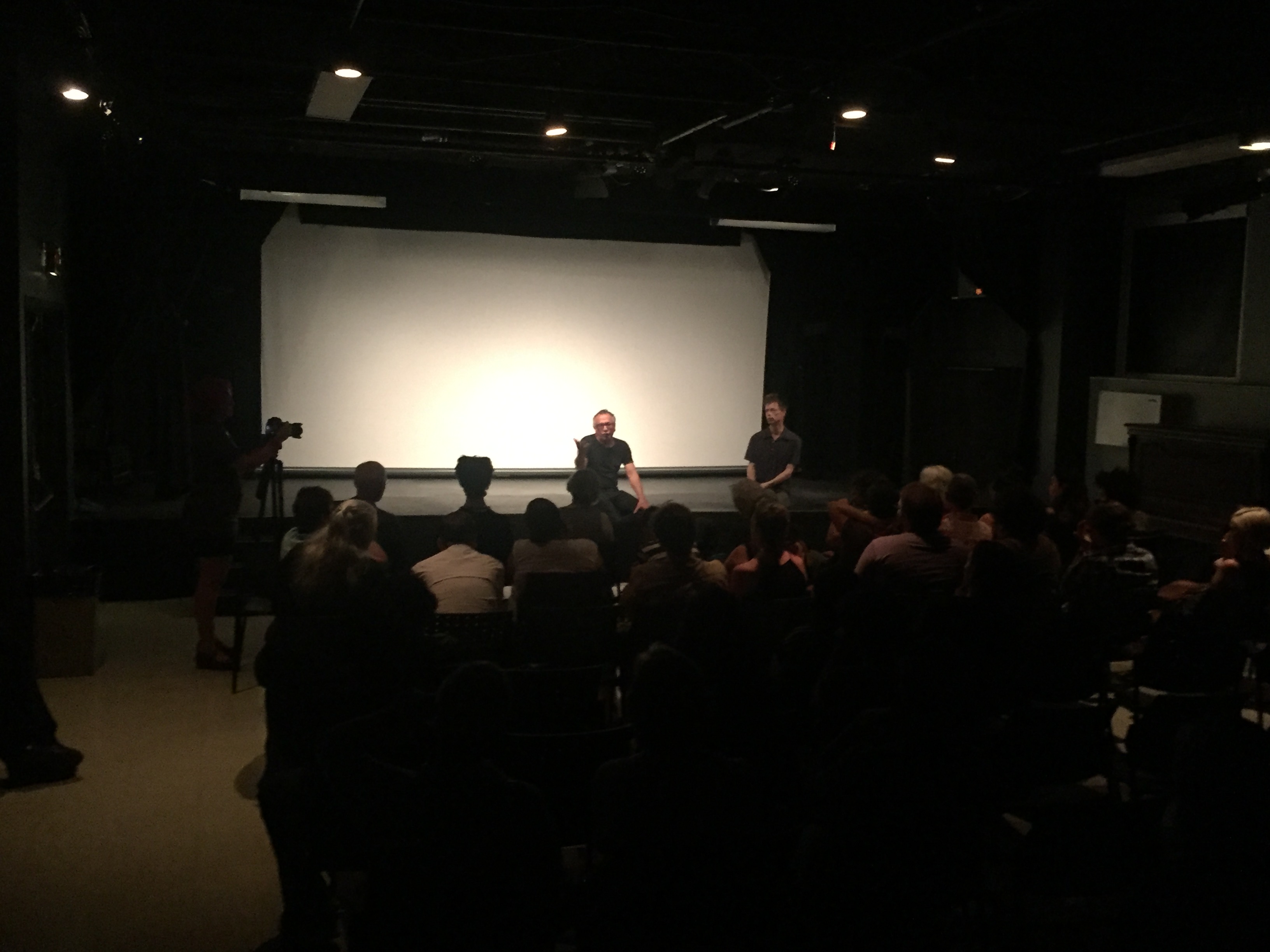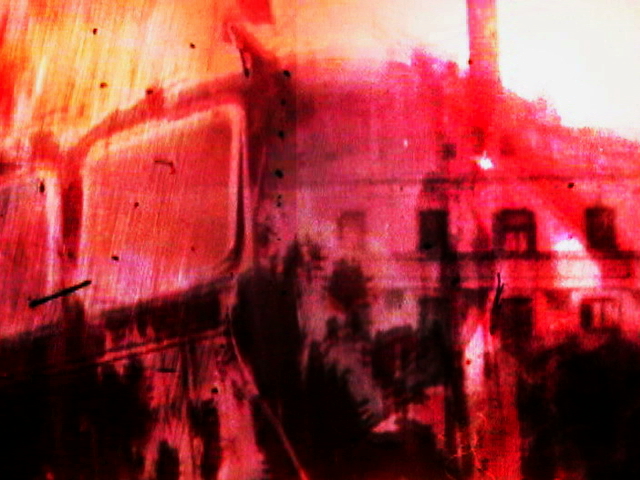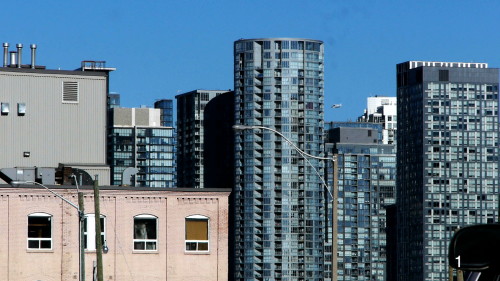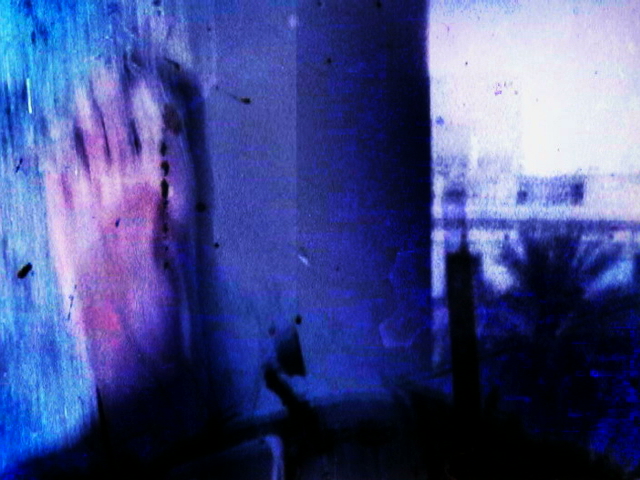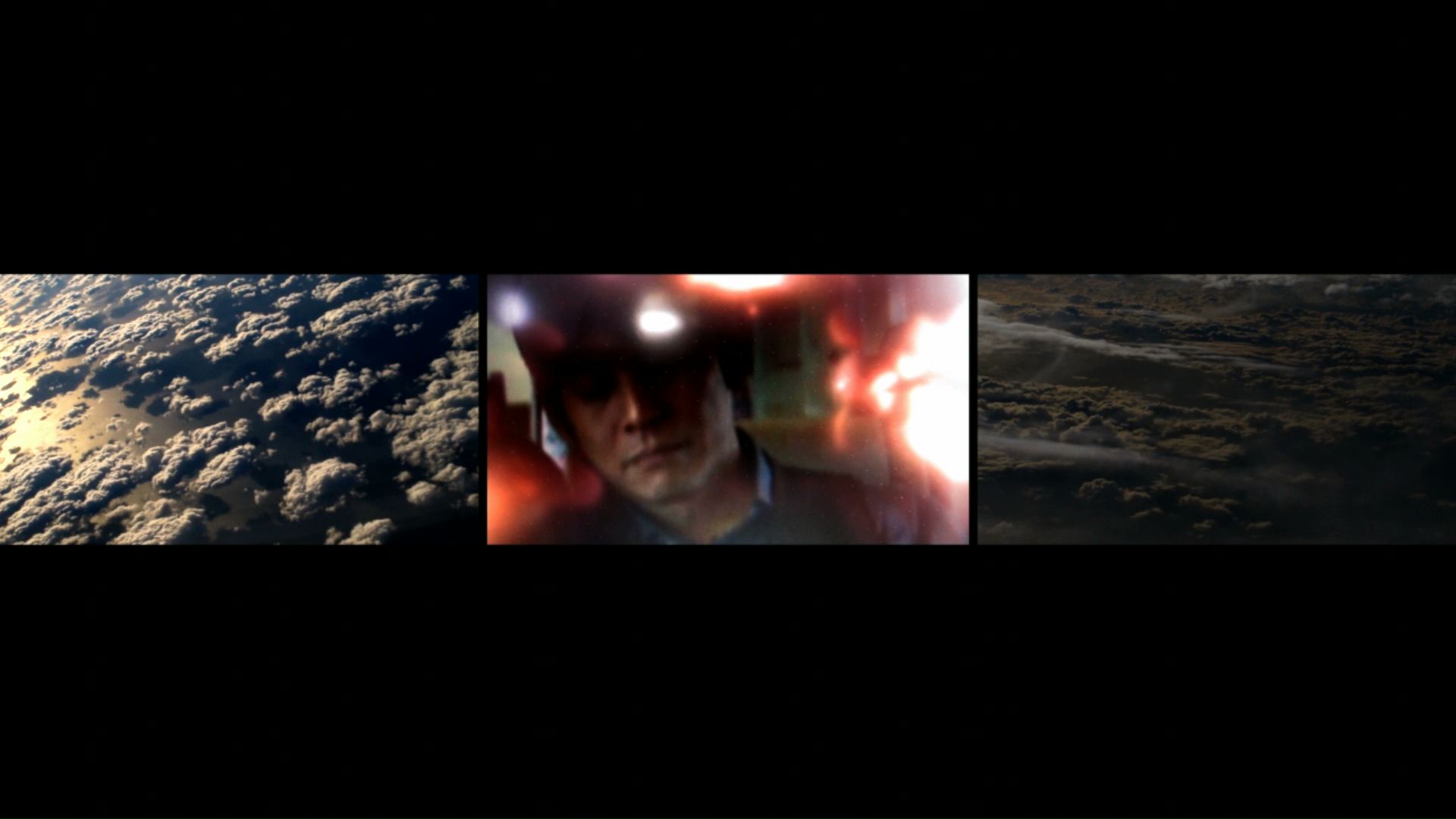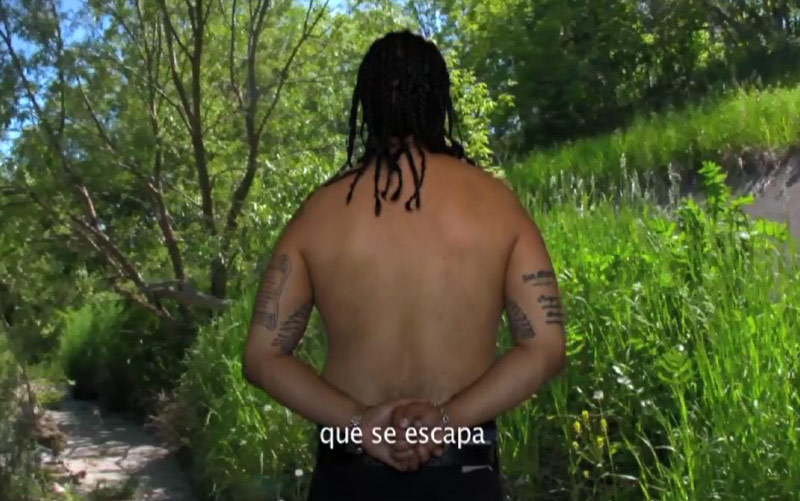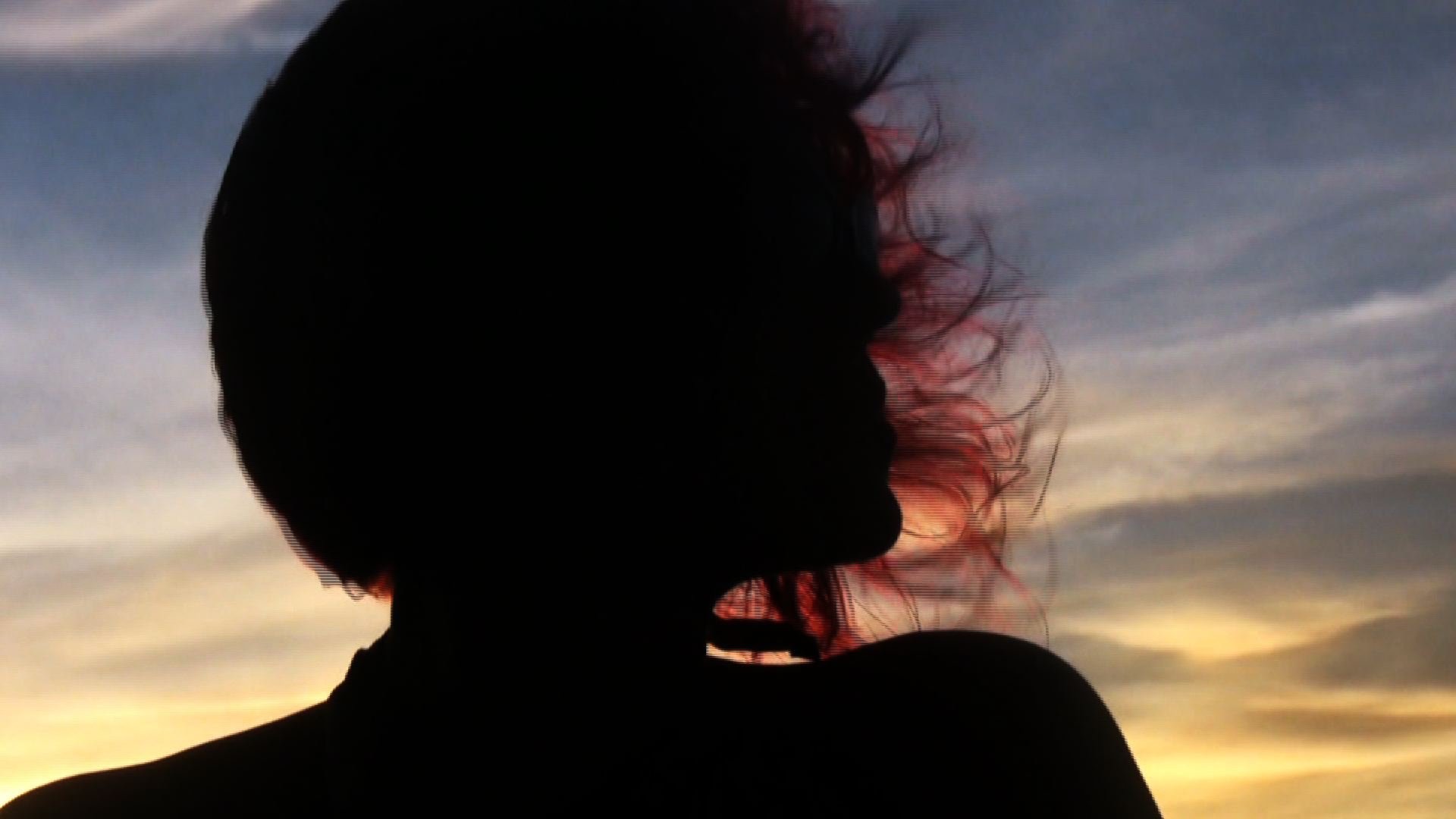Pleasure Dome presents
Saturday June 25, 2016
Cooking with Jorge
7pm dinner
8pm screening
Location: Arcadia Housing Co-op 680 Queen’s Quay West, performance space
(just inside the front door)
Jorge Lozano is the maker of over 100 movies, a treasure of the local movie scene, his restless visual inventions emerge from a period of super 8 activism and personal video interludes. In the past dozen years he has divided his time between his former home of Colombia and Toronto, which has lent his work a renewed political focus along with a keen aesthetic wit. It is difficult to keep track of this nomadic voyager, no sooner have I digested one of his luxurious outpourings then he invites me over to watch another. He is forever translating his thoughts and encounters into media moments, deeply concerned with the art of asking questions. Why this gender? Why this desire, this neighbourhood, this poverty? The centerpiece of tonight’s screening is an intimate and underground portrait of a Toronto that is rarely granted airtime, as four comrades testify to life in the margins. The artist’s commitment to experimentalism is animated by the necessity of these questions, which are forever opening, like the artist’s heart.
Tonight’s screening will feature a free dinner (!) cooked by Jorge, served at 7pm, please come by and have a plate. Or just come for the movies at 8.
Within the isolation of my opulence 12 minutes 2014
Black Box 5 minutes 2006
CloroX 5 minutes 2014
Cleaning Practice 5 minutes 2014
Watch My Back 40 minutes silent 2010
Within the isolation of my opulence 12 minutes 2014
Shot in Toronto during the fifty days of Israel’s invasion of Gaza from July 8 to August 26, 2014. Jorge ventures out into the neighbourhood to make a portrait of a city glowing with self-absorption. A plant that looks like a brain, a stolid stand of towers, iced fish in the market, a mirrored set of shadowed townhouses. Between these composed idylls there are interruptive flashes of a laptop carrying news of a faraway massacre. The citizens of Gaza are being slaughtered, and not for the first time. The movie resolves in the artist’s apartment where the unseeable and unthinkable are broadcast from CNN. A boy lies on a stretcher with a hole where his intestines should be as his father tries to offer reassurance. The intrusion into these private scenes lends a final indignity as the artist struggles to find a place to put them in his apartment. How to make these faraway atrocities feel close?
Black Box 5 minutes 2006
A brief quotation from Shakespeare’s The Tempest (“be not afeard”) begins this walk through time and space, before the movie’s title there is already a sentencing, a text that brings judgments, openings and closings. The movie pictures a deluge of memory, strolling through the architectures of the self, and the buildings that housed those selves, all in a flickering cascade of hand developed pictures. The artist’s body, particularly his sandaled feet and sunglassed face, act as the anchor for the visual cascade. He is trying to hold a balance between past and future as he is pictured walking backwards, into a history of emulsion and projections and the ruined machines that lie mostly forgotten.
CloroX 5 minutes 2014
Made on a flight from Canada to Colombia, the artist offers a ménage a trois, a three-screen affair whose backdrop is a universe of clouds. Inside the plane, dreamers slump in hazy deliriums of light. And between the pictures on display, above and below them, texts are exchanged between lovers. There has been an affair, another man has come between the two of them, but now new vows of fidelity are exchanged. The path will be cleaned. The onscreen text derives, astonishingly, from a found email.
Cleaning Practice 5 minutes 2014
The work doesn’t end. It’s never enough. Film as painting. Self portrait strained through MAX MSP (which also created the live soundtrack), a digital self that is forever entering and exiting the computer. The artist tries to wipe away the traces, only to find himself subject to the same technological imperatives.
Watch My Back 40 minutes silent 2010
Harrowing tales from the neighbourhood. In a suite of four ten-minute portraits, the subject stands with their back to the camera facing a second image, which offers slow pans of what is close by and familiar, or else close-ups of tattoos and skin. A capitalized text appears in short, staccato phrasings offering testimony of migration from Nicaragua or Colombia, a corrosive and systemic racism in Canada, and lives rarely glimpsed in fringe media, filled with violence and poverty. The transcribed testimonies turn biography into poetry.
“Life in jails means to/watch your back. Your friends can become enemies/because of a toothbrush or food/or a phone call./They lose control/from one second to the next./In jail racism works in many ways/majority against minority/hispanos, native and blacks get along/in our eyes, whites are the enemy./We think/they are the ones who put us inside./We reject them, don’t want them close./They can be police or informers or rapists/somehow whites commit those crimes./In the streets racism is different/it has to do with territory./We are separated by racism/the white places are clean, bright/our places are sad, dark, dirty./We don’t want to be there/but they send us there and you can’t say/
No, I don’t want to live here/I want to live in Richmond Hill./In housing rent is cheaper/but life is dirtier/and not normal./I have been here twenty years/and they are deporting me now./I recognize my mistakes/the errors I have committed./I have nothing against anybody/including the police/somehow the police always/had me in front of the cameras./Now, I want to be/behind the cameras./I want to make/my reality visible/I want to be the one/who directs my own life.”
Extras
Collapse 1.5 minutes 2015
A single moment in the cafeteria, an ugly setting, a moment of conversation where language is refused. In its place a buzzing bass tone and a stuttering high end, as if the cloth of words was being undone. A fulsome texture marks this lunchtime encounter, as artist Alexander Gelis gestures from her cell phone at hyper speed, before a Gothic text from poet Jericho Brown’s The New Testament runs across her darkness. “I cannot locate the origin/of slaughter/but I know how my own feels./I live with it/and use it/to get the living done/because I know/I’ve seen the collapse./Love being any reminder/I survived.”
Resonance 7 minutes 2016
Made on a trek to Portobello, Panama with comrade-in-arms Alexandra Gelis, Resonance offers a reflection on the cholera epidemic that ravaged this port city, and the mysterious black statue that delivered its population from the plague. The artist’s broken camera offers watery outlooks and Alexandra’s magic hour silhouette as textual counterpoint, a myth of today and yesterday joined in a shattered chip.
